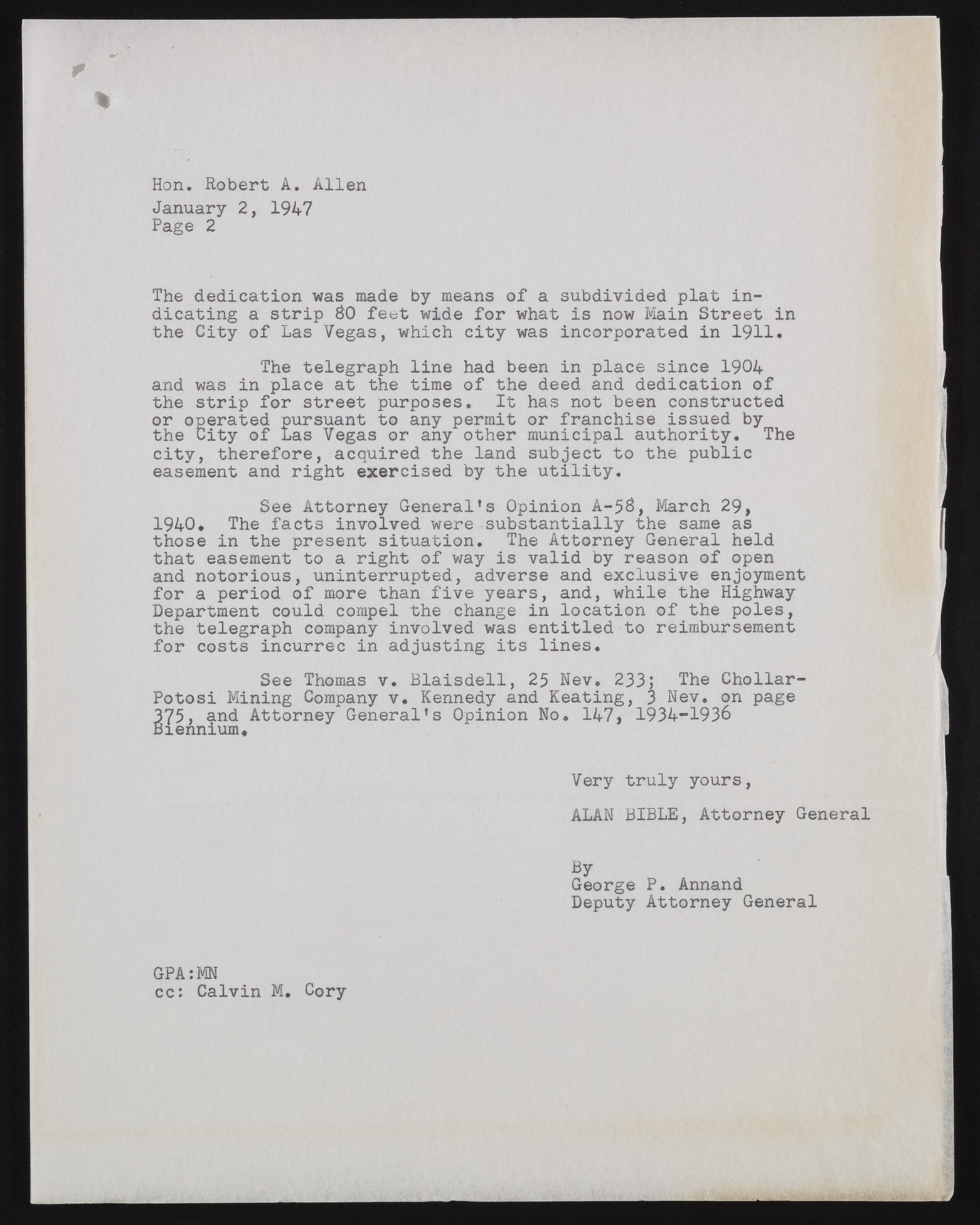Copyright & Fair-use Agreement
UNLV Special Collections provides copies of materials to facilitate private study, scholarship, or research. Material not in the public domain may be used according to fair use of copyrighted materials as defined by copyright law. Please cite us.
Please note that UNLV may not own the copyright to these materials and cannot provide permission to publish or distribute materials when UNLV is not the copyright holder. The user is solely responsible for determining the copyright status of materials and obtaining permission to use material from the copyright holder and for determining whether any permissions relating to any other rights are necessary for the intended use, and for obtaining all required permissions beyond that allowed by fair use.
Read more about our reproduction and use policy.
I agree.Information
Digital ID
Permalink
Details
Member of
More Info
Rights
Digital Provenance
Publisher
Transcription
Hon. Robert A. Allen January 2, 1947 Page 2 The dedication was made by means of a subdivided plat indicating a strip $0 feet wide for what is now Main Street in the City of Las Vegas, which city was incorporated in 1911. The telegraph line had been in place since 1904 and was in place at the time of the deed and dedication of the strip for street purposes. It has not been constructed or operated pursuant to any permit or franchise issued by the City of Las Vegas or any other municipal authority. The city, therefore, acquired the land subject to the public easement and right exercised by the utility. See Attorney General’s Opinion A-5$, March 29, 1940. The facts involved were substantially the same as those in the present situation. The Attorney General held that easement to a right of way is valid by reason of open and notorious, uninterrupted, adverse and exclusive enjoyment for a period of more than five years, and, while the Highway Department could compel the change in location of the poles, the telegraph company involved was entitled to reimbursement for costs incurrec in adjusting its lines. See Thomas v. Blaisdell, 25 Nev. 233; The Chollar- Potosi Mining Company v. Kennedy and Keating, 3 Nev. on page 375, and Attorney General’s Opinion No. 147, 1934-1936 Biennium. Very truly yours, ALAN BIBLE, Attorney General By George P. Annand Deputy Attorney General GPA:MN cc: Calvin M. Cory

